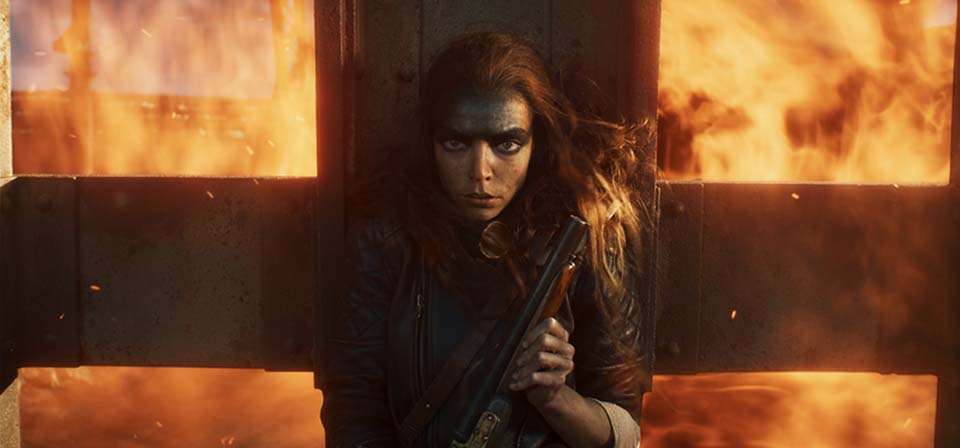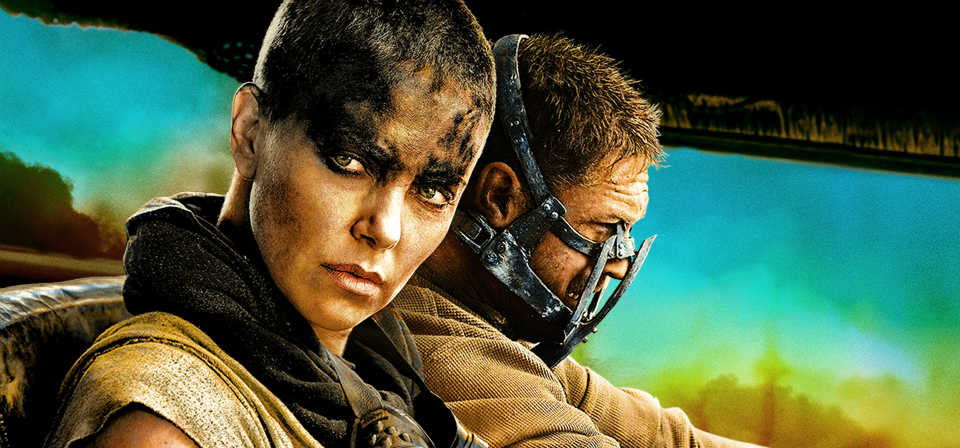“We are not things”: Mad Max: Fury Road and commodifying human life
“We are not things” is the defiant reproach to a horrific totalitarian regime that reduces people to commodities in George Miller’s astonishing, visionary Mad Max: Fury Road. The film depicts human bodies branded and subjected to the utilitarian, ruthlessly efficient production methods of industrial farming, with blood and mother’s milk harvested and women reduced to breeding stock.
In another movie, a line like “We are not things” could be a platitude, but in the context of vividly imagined atrocities with unnerving echoes of recent headlines, this simple affirmation is fraught with topical power that has only grown in the months since the film’s theatrical debut.
Most obviously, the sexual enslavement of women by the monstrous leader of the cultish horde of the Citadel resonates with the sex slavery practices of the Islamic State newly highlighted in yesterday’s New York Times story by Rukmini Callimachi. In other respects, too, the Citadel cult suggests radical Islamism, especially its blend of fanatical religious fervor and nihilistic violence, with ignorant, brainwashed would-be martyrs ready to kill and die to be welcomed into paradise (here Valhalla) as well as its tyrannical social control and the crushing ignorance of its adherents, whom we discover can be quite human when separated from the system that formed them.
The depiction of exploitative industrial commodification of bodily tissue has acquired new relevance in light of the ongoing release of undercover videos revealing how Planned Parenthood harvests and sells organs and even intact fetal cadavers, in some cases allegedly without maternal consent. (“Was it a male?” asks the villain as a character performs an emergency C-section on a dead or dying mother whose child has also died. “Your A-1 alpha prime,” confirms the surgeon, the “Organic Mechanic.” Viewers who have seen the Planned Parenthood videos may be reminded of the medical worker remarking “Another boy!” while processing post-abortion fetal tissue.)
In a genre typically defined by the vying wills of male heroes and villains and beset by tokenism in portraying tough but dramatically irrelevant female characters, Mad Max: Fury Road gives central attention to the actions and concerns of its female characters. In a thundering action film that’s essentially one immense chase scene involving fleets of muscular, oversized vehicles, and lots of explosions, shooting, and hand-to-hand combat, Miller manages to inject a genuine feminist perspective, offering an implicit rebuke not only to oppressive patriarchal states but to ongoing sexism and objectification of women in Hollywood blockbusters, and by extension the wider media culture, from advertising to pornography.
It is not the nominal hero (Tom Hardy in the iconic role that made Mel Gibson a star) who challenges the tyrannical system imposed by the monstrous villain, but the patriarchal villain’s favored female slave-commander, Imperator Furiosa (Charlize Theron), who smuggles the villain’s prize breeders — his so-called “Five Wives” — out of the Citadel.
“Where is she taking them?” rages Immortan Joe (Hugh Keays-Byrne, who played the original Mad Max’s main villain, Toecutter) when he realizes his “wives” are gone.
“She didn’t take them! They begged her to go!” is the triumphant response from an elderly woman who seems to have acted as a mentor to the Five Wives. “They are not your property. You cannot own a human being. Sooner or later someone pushes back!”
The film’s feminist angle has perhaps been somewhat overstated, both by aggrieved anti-feminist men and by enthusiastic feminists. The actresses who play the Five Wives are all gorgeous models in diaphanous attire, and while, as with Princess Leia’s slave-girl metal bikini in Return of the Jedi, some plot-level rationale can be offered for this (since Immortan Joe would naturally pick the healthiest and most attractive females with which to breed, and their attire is what he has provided for them), on some level the movie wants to have its (cheese)cake and eat it too.
On the other hand, the film gratifyingly avoids any suggestion of a romance between Max and Furiosa; they go from adversaries to uneasy cobelligerents to comrades in arms, but any sexual tension between them is strictly below the surface.
Instead, the film allows a tentative romantic connection between one of Immortan Joe’s brainwashed, slowly dying “War Boys” and one of his Five Wives. Here — as in a climactic scene in which Max saves Furiosa’s life, not in a dramatic action scene, but by a deeply personal act of self-giving — characters choose to share what was forcibly taken from them in the Citadel cult. What is a monstrous violation when stolen becomes touching and moving when offered as a gift.
All this transpires in a cinematic nightmare world defined by florid imagery, gonzo production design, and immense Rube-Goldberg set pieces, sketching just enough narrative framework, characterization, and dialogue to barely hold the film together. Some viewers may find the ordeal of watching the film to overshadow the rewards.
Yet, for a movie set in such a monstrous world, Mad Max: Fury Road is remarkably human in its affirmation of hope and the possibility of redemption, both for individuals and communities. When we first meet him, Max is almost a walking dead man, haunted by the horrors he has seen and couldn’t prevent, driven only to survive. “Hope is a mistake,” Max rumbles to Furiosa. “If you can’t fix what’s broken, you’ll go insane.” Instead, hope is what makes it possible not only to fix what is broken, but to fight back from the edge of insanity.
Related

Two things I wish George Miller had done differently in Furiosa: A Mad Max Saga
The Fury Road prequel is a satisfying return to the world of the demented 2015 film—but there were two missed opportunities, relating to Immortan Joe’s Wives and Furiosa’s revenge.

Furiosa tells the story of a world (almost) without hope
Is there no hope? This desperate question hangs over the previous film in the saga, Miller’s 2015 extravaganza Mad Max: Fury Road. Now, the same question haunts Furiosa, an epic origin-story prequel for Fury Road’s stealth protagonist, Charlize Theron’s Imperator Furiosa.

Mad Max: Fury Road (2015)
In the first act of Mad Max: Fury Road, Tom Hardy’s Max spends more time than you might expect strapped helplessly to the front of a turbo-charged Chevy coupe, maniacally driven by a fanatic through a hellish landscape, an unwilling witness to the chaos ensuing around him. Sitting in the theater, I felt about the same way, I think.
Recent
- Benoit Blanc goes to church: Mysteries and faith in Wake Up Dead Man
- Are there too many Jesus movies?
- Antidote to the digital revolution: Carlo Acutis: Roadmap to Reality
- “Not I, But God”: Interview with Carlo Acutis: Roadmap to Reality director Tim Moriarty
- Gunn’s Superman is silly and sincere, and that’s good. It could be smarter.
Home Video
Copyright © 2000– Steven D. Greydanus. All rights reserved.